Published on
Updated on
Contents:
Determining Cold-Injury to Grape Buds
The recent extreme cold-temperature events resulting from the “Polar vortex” should have you thinking about grape bud injury. A brief primer on the anatomy of a grape bud will help you further understand the evaluation process. The primary bud is in the center, the secondary bud is above the petiole leaf scar and the tertiary bud is on the opposite side of the primary bud directly across from the secondary bud. The longitudinal cross section of a grape bud clearly shows the three buds of a compound grape bud (Figure 1).

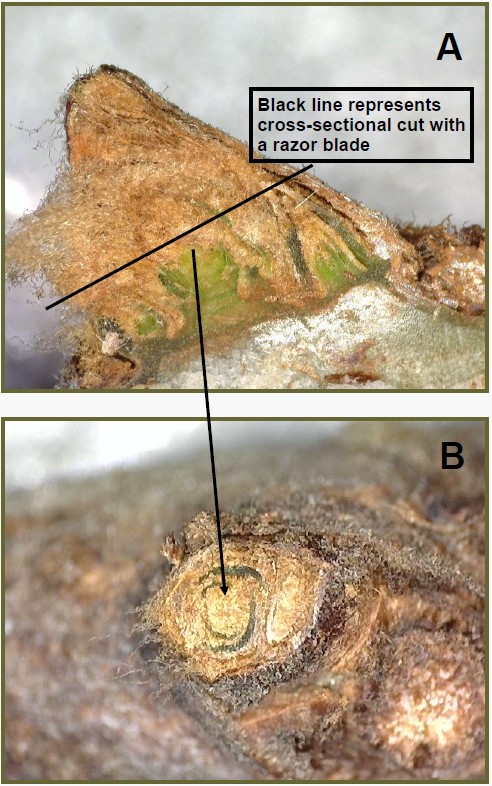
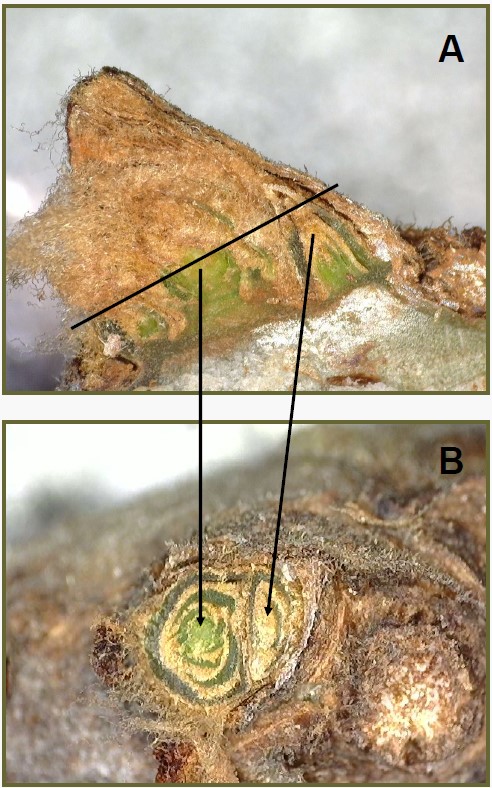
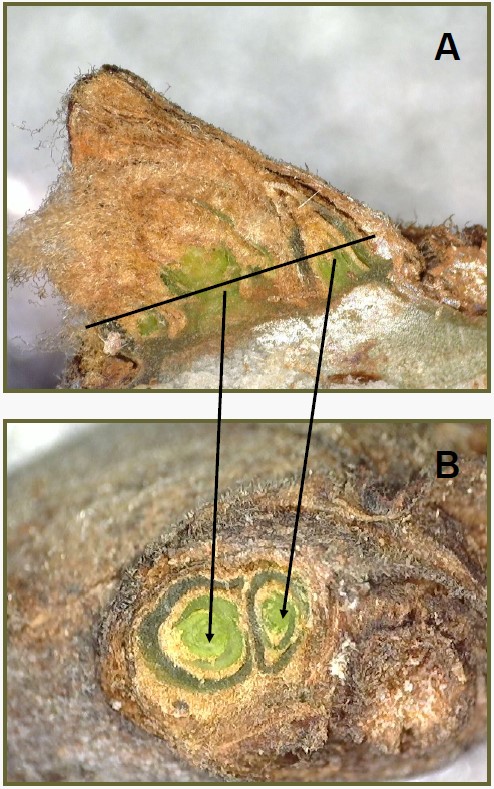
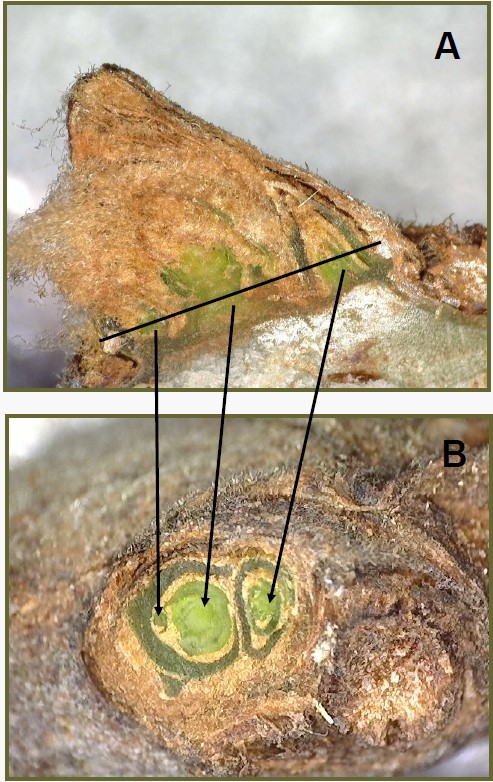
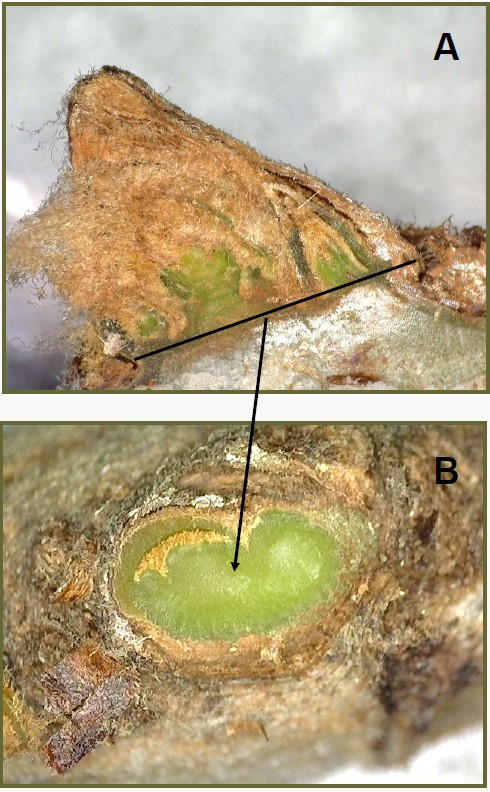
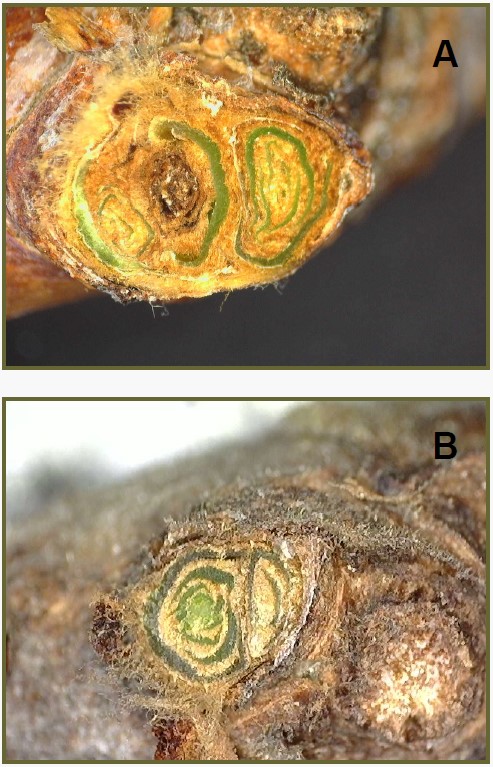
Items You Will Need to Determine Bud Injury
- Razor blades
- 10X hand lens helps to view cut buds
- Grape canes
- Collect 10 canes with 10 buds. Take a single cane from a vine. The cane should represent the buds you would keep during dormant pruning. Select vines randomly throughout the vineyard. If the vineyard block you are sampling has different terrain (i.e. vines on a bluff and vines on the bottom of the slope) then consider collecting two different samples.
- Keep cultivars separate.
- Place canes indoors at approximately 70°F for 24 to 48 hours prior to evaluating the buds. This time period allows injured grape buds to oxidize.
- Data collection
- Consider location of bud on the cane. Buds closest to the cordon would be bud 1 and the distal bud would be bud 10. The buds closest to the cordon are more cold hardy.
- Initial assessment of buds may just be primary buds. If bud injury to primary buds is 60% or greater, then consider evaluating secondary buds.
Please do not rely on data of bud damage that your neighbor has collected or data that I may post. Each vineyard block is a separate unit and cultivars respond differently to cold injury. Additionally, past management practices play a large role in the cold sensitivity of the grape buds.
What to do with your bud injury data:
- Realize that even in a “normal” year primary bud damage can be near 15%. If your data is 15% or less primary bud damage then you will not need to adjust your dormant pruning.
- Based on bud damage percentages, you can adjust your bud counts to reflect the damage.
- You need to know your grape cultivars fruitfulness. Does the cultivar produce fruit on secondary buds? Does the cultivar produce fruit on basal buds? There is not a lot of data on these two topics for individual cultivars. Most of this information comes from other grape growers who have experienced cold weather events in the past. So reach out to other growers that are growing the same cultivars as you. A simple unwritten rule is that secondary buds produce approximately 1/3 of crop compared to primary buds.
Please scout your vineyards on a regularly scheduled basis in an effort to manage problem pests. This report contains information on scouting reports from specific locations and may not reflect pest problems in your vineyard. If you would like more information on IPM in grapes, please contact Dean Volenberg at 573-882-0476 (office) 573-473-0374 (mobile) or volenbergd@missouri.edu
